The Best Student Information Systems (SIS)
We’ve leveraged over two decades of recommending software to curate this guide to the top student information systems.
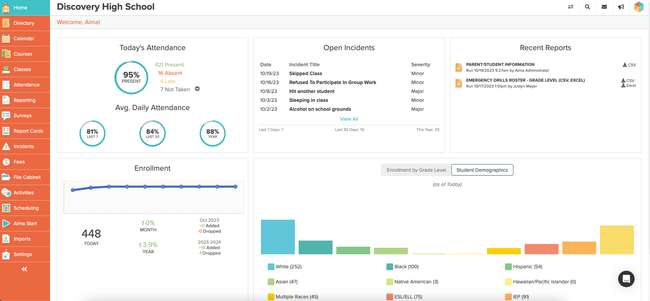
- Easy to navigate
- Integrates administrative processes into SIS
- Responsive customer support
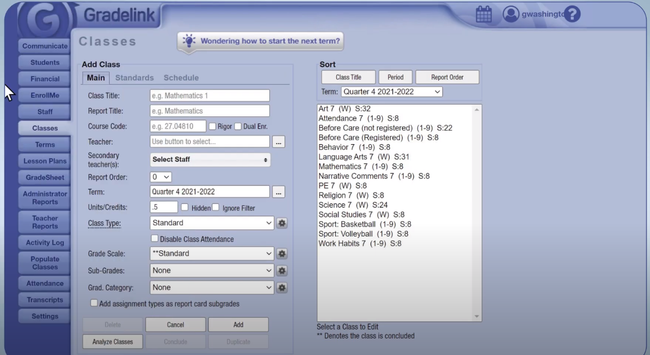
- Includes on-line enrollment, parent/student portal, and communication features
- Easy interface with good documentation to help navigate
- Training and support are fairly robust
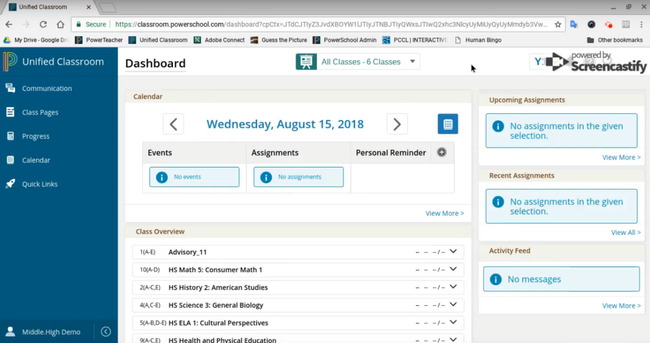
- Very user-friendly system
- Detailed reporting features
- Includes special education modules
Student information systems are valuable tools for K-12 and higher education facilities to streamline operations. From tracking attendance to managing finances, these systems offer undeniable benefits. After researching and comparing the best SIS software on the market using our independent review process, here are our top picks.
- Alma SIS: Best Overall
- Gradelink: Runner-Up
- PowerSchool SIS: Top Pick
- Ellucian Banner: Best for ERP
1 Alma SIS - Best Overall
Why We Chose It: Alma SIS is our top pick for SIS software. This system is set apart by its integration with a Learning Management System (LMS) which promotes modern teaching methods, facilitates content delivery, and fosters collaborative learning experiences. It is designed for K-12 schools.
We noted this software is particularly adept at streamlining administrative processes, reducing the burden on teachers and staff, and enhancing the overall educational experience. The platform’s intuitive design and responsive customer support contribute to its appeal. While Alma seems to excel in many areas, we found the billing component may not be as comprehensive for institutions looking for more in-depth financial management features.
2 Gradelink - Runner-Up
Why We Chose It: Gradelink offers a wide range of features that cover K-12 school management, including curriculum management, gradebooks, report cards, attendance tracking, class scheduling, and more. These tools streamline admin tasks, allowing educators and administrators to focus more on providing better student services and enhancing the overall academic experience.
Our review found Gradelink incredibly user-friendly, especially for administrators with varying levels of technical expertise. And the pricing, starting at $100 per month and based on the number of actively enrolled students, provides flexibility for schools of different sizes and budgets.
3 PowerSchool SIS - Top Pick
Why We Chose It: PowerSchool SIS covers various aspects of daily school operations. The inclusion of both a Parent Portal and Student Portal enhances communication and engagement between schools, parents, and students. Parents can monitor their child’s academic performance, attendance, and class schedules, while students can access their grades, assignments, and graduation progress.
The centralized data system for third-party data integration is a notable advantage, streamlining data management processes. We found this helped provide valuable insights into student data, helping educators identify and support at-risk students effectively.
4 Ellucian Banner - Best for ERP
Why We Chose It: Ellucian Banner is a higher education ERP which offers features of student information management, HR, and financials. This comprehensive approach allows educational institutions to manage their operations efficiently and holistically.
The student-focused features, such as registration, advising, and administration tools, help streamline student management processes, making it easier for students to plan their courses and register for classes. The system’s flexibility and comprehensive registration options benefit both students and administrators.
5 Infinite Campus
Why We Chose It: Infinite Campus stands out for its integrations, offering additional capabilities beyond a traditional SIS. There are features such as learning management software (LMS), food service management, district communication tools, finance, and human resources functionality. This integrated approach allows educational institutions to manage various aspects of their operations efficiently within a single platform.
Infinite Campus’s scalability is a notable advantage, making it suitable for educational institutions of any size, from smaller schools to larger districts. The system is continuously updated with monthly enhancements, ensuring that users have access to the latest educational technology and core functionality.
6 Blackbaud Student Information Management System
Why We Chose It: Blackbaud Student Information Management System is designed for both K-12 private schools and higher education institutions. It integrates with other Blackbaud software, including learning and enrollment management systems, to cover multiple aspects of student management, from academics and attendance to fundraising, marketing, and engagement.
Some unique features include customizable gradebooks, scheduling tools, volunteering management, school lunch tools, and health histories tracking.
7 Administrator’s Plus
Why We Chose It: Administrator’s Plus made our list because it’s a complete SIS for PK-12 schools requiring tighter collaboration between educators, parents, and students. The platform provides a mobile app for on-the-go access. And its PlusPortals functionality enables easy data sharing between parents and teachers.
Additionally, Administrator’s Plus gives families online access to monitor their student’s performance. Overall, the software is adept at handling attendance tracking, scheduling, billing, grade books, and more.
8 Skyward Student Management Suite
Why We Chose It: Skyward Student Management Suite is primarily designed for K-12 educational institutions. Custom portals and mobile apps let parents easily track their child’s academic progress, attendance, and behavior, while teachers can efficiently manage grading, attendance, and behavior tracking.
Skyward’s emphasis on classroom tools and family engagement supports effective teaching and parent involvement. It promotes a paperless environment, digital literacy, and transparent classroom management.
What Are Student Information Systems?
Student information systems (SIS), also known as “student management systems” or “student information management systems,” are web-based software that helps students, teachers, families, and administrators track students’ academic careers. Student information software maintains student records from their initial registrations to their eventual discharges. They hold data like attendance/truancy records, health histories, discipline records, academic histories/transcripts, financial obligations, and more.
For teachers and school administration, student information systems help with scheduling, grading, fundraising, and communications with families, among many others. SIS are like customer relationship management tools (CRM) but built within or able to integrate with school management systems and learning management systems.
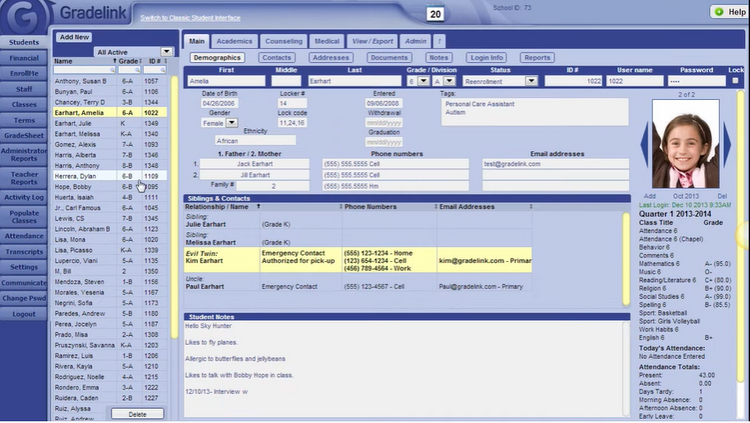
Features of Student Information Systems
- Recruiting: Easily collect prospective students’ information with an integrated module/tool on your website. Use that information to follow up with emails, phone calls, answers, and quotes.
- Gradebooks: Manage transcripts/report cards, weighted grading, standards-based/numeric options, assignment types (quizzes, worksheets, essays, finals, etc.)
- Scheduling and Events: Use advanced calendars to create and track school-wide/district-wide events, class-specific events/deadlines, teacher schedules, after-school events, birthdays, and more.
- Student and Family Communication: Help teachers and administrators streamline communication with students and guardians and vice versa. Send messages through phone calls, emails, and text messages.
- Student and Family Portals: Students and their guardians have their own portals to communicate with teachers and administrators, see grades, upload/download documents, and view class/assignment rubrics.
- Student Attendance: Track and review attendance for classes, student activities, and field trips. Set up automated penalties for truancy infractions.
- Student Uploading Tools: Let students upload assignments, essays, and other files for teachers to review. Students can collaborate by sharing documents with each other.
- Fundraising and Volunteer Management: Administrators can create, manage, and review fundraising events and strategies. Track volunteer hours for guardians and students.
- Discipline History: Track details of a behavioral incident (individuals involved, times/dates, series of events, etc.). Send alerts to administrators and guardians and, if necessary, report events to appropriate authorities.
- Medical Records: Keep students’ allergies, vaccinations, and other health information available at all times. Let guardians/students upload medical records.
- Internal and State Reporting: Access pre-built report templates to track internal information like GPA student rankings, athletic eligibility, or volunteer hours. Send reports to agencies about student truancy, PSAT/SAT/ACT scores, class grade averages, and other student records.
- Financial Tools: Track money received and owed for tuition, field trips, lunch, and textbooks. Let students and guardians securely pay online with customizable and automated payment plans.
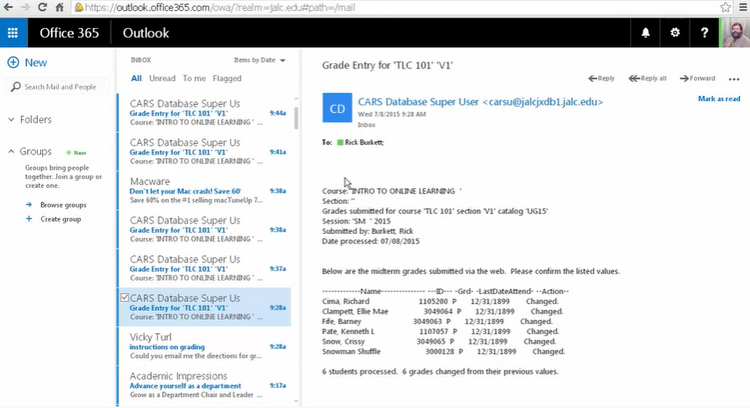
Benefits of SIS for Schools
Student information systems are built for school and student success. SIS helps students by giving them full transparency to their academic progress and full access to resources and expectations from their teachers.
Academic Reporting
Administrators can select and fill in specific forms and documents from a library of state reporting templates. Some data can be directly imported from Excel spreadsheets and other file types, which reduces the amount of time needed, as well as data entry errors. And SIS will update templates to stay up-to-date and compliant with data standards like Ed-Fi, SIF, and ADT.
Administrators can view these reports in a variety of ways to assess teachers or departments. They can see how certain classes progress or digress throughout their time at a school, and compare them to past classes and/or state or federal classes of the same year. Schools can create strategies to continue success or reverse declines, and then they can see the results of their strategies in future reports.
Student and Guardian Portals
Most student information systems have separate portals for students and their guardians. Teachers can post rubrics, schedules, assignments, course work, deadlines, and more, so students have their work and expectations readily available. Teachers can communicate with students and guardians through these portals. This gives guardians easy and direct access to their children’s teachers, and it makes sure that teachers are able to reach guardians. Other notifications and histories will be saved on the portals, like report cards, disciplinary records, health histories, attendance, schedules, and more.
Financial Data Management
Schools require many different payments from students throughout the year, and student information systems help administrators manage those payments and information. Administrators can create events that students can sign up for and then pay for, all online, within the same portal. That information gets logged, and a student list will be generated for each event. Students can sign up for an event without paying, too; and the SIS will notify administrators to collect payment at a different time. Notifications for payments can be sent to student/guardian portals, as well.
Financial aid, grants, and scholarships can be tracked through SIS, as well. Deadlines can be set for any necessary payments, and schools can set up payment plans with participating students/guardians. Schools can view their incoming revenue and outgoing financial aid, past financial data, and future projects. And they can use that information to prepare budget goals, fundraising targets, and other financial strategies.
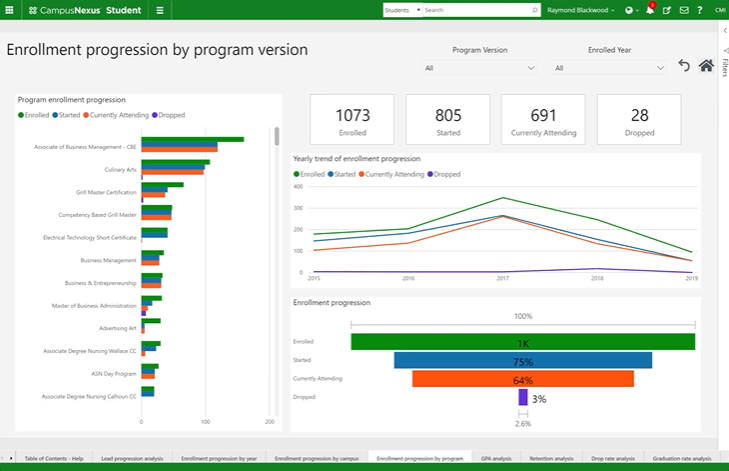
Types of Educational Institutions
Each individual school and district has its own standards, curricula, and needs; and student information systems have broad tools to help with all of them. From kindergarten to postgraduate degrees, SIS helps students and schools with scheduling, finances, data management, and student outcomes.
Some SIS are built for certain types of educational institutions, though. Many student information systems are built to scale up and down with varied enrollment sizes, budgets, student demographics, and educational levels. While others are built to serve specific types of schools and students.
K-12 Education
With so many types of students in so many stages of their progress, with so many necessary student services, student information systems need to be flexible and robust. Things like birthday alerts help teachers celebrate with their younger students. And high schools need systems to decide who qualifies for certain types of courses. And with students moving from elementary to secondary schools or transferring from one school to another, SIS needs to be able to easily share information.
Student information systems include a vast number of scheduling tools and gradebooks to comply with any school’s scheduling or grading standards. Teachers can access curriculum management tools and, for example, electronically pass out assignments and studies by individual students, as opposed to the entire class. This lets teachers decide how quickly or slowly students will move through their work, and it can help teachers manage their time between their students.
Outside of the classroom, SIS helps manage field trips, arts and athletics, social events, and other extracurriculars. Students and guardians can see when practices/rehearsals are, where certain events will occur, in addition to whatever other important information. SIS helps clubs schedule their meetings, and it helps leaders see where students are supposed to be at any particular time.
Private Schools
Private schools often have additional needs to public schools, mostly around tuition and fundraising; and many SIS have tuition tracking tools for administrators and guardians. Administrators can project revenue based on enrollment and tuition, while guardians can view their tuition paid/owed, along with any financial aid and/or scholarships given to them. Many SIS accept payments online, with tools for payment plans and automatic payments.
Keep donors aware of fundraising efforts, and make payments simpler with student information systems. Private institutions can manage the contact information for families, sponsors, alumni, and past donors, making communication and marketing campaigns simpler and more effective. And then SIS sets up individual accounts for donors for them to enter their contact and billing information. They can set up automated payments, one-time gifts, and more. And SIS stores payment history and documentation, which helps with donor paperwork and tax filings.
And particular requirements for certain schools can be shared with students and guardians. Have students log volunteer hours, have dress codes publicly available, and disciplinary rules, among much more.
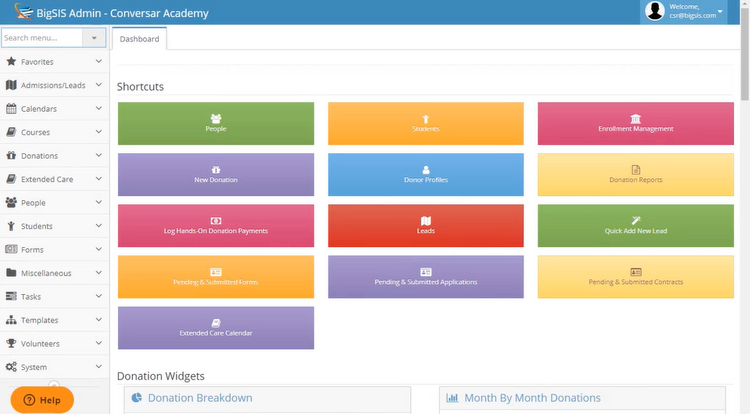
Higher Education Institutions
Like private schools, recruitment, tuition, and financial aid are important and difficult issues for higher education institutions to solve. Student information systems for higher education help school administrators and their students in very similar ways to private primary and secondary schools. But they have tools to help with grants and student loans, as well.
Students and advisors can also access interactive tools to explore different types of careers. See what degrees employers are looking for, where certain jobs are available, average starting salaries of different occupations, and more.
Students can easily see what types of and/or specific courses they will need to complete in order to declare or seek admission to certain schools and majors. And they can track the progress of their credits and requirements throughout their academic career. So all of their student progress is saved, and students and advisors can cross-reference that information with certain graduation requirements.















































